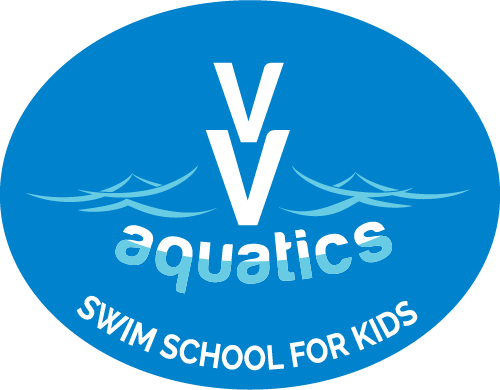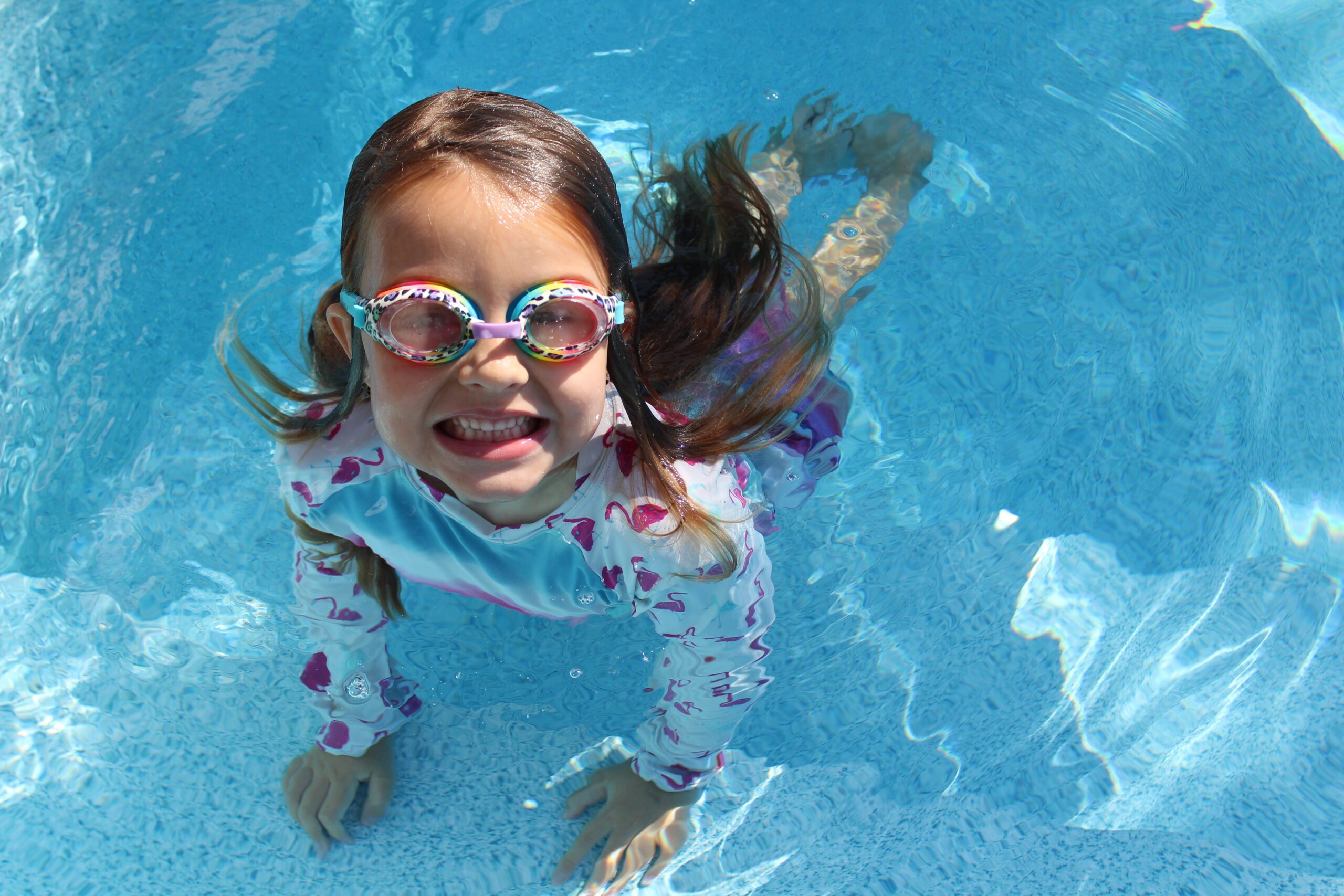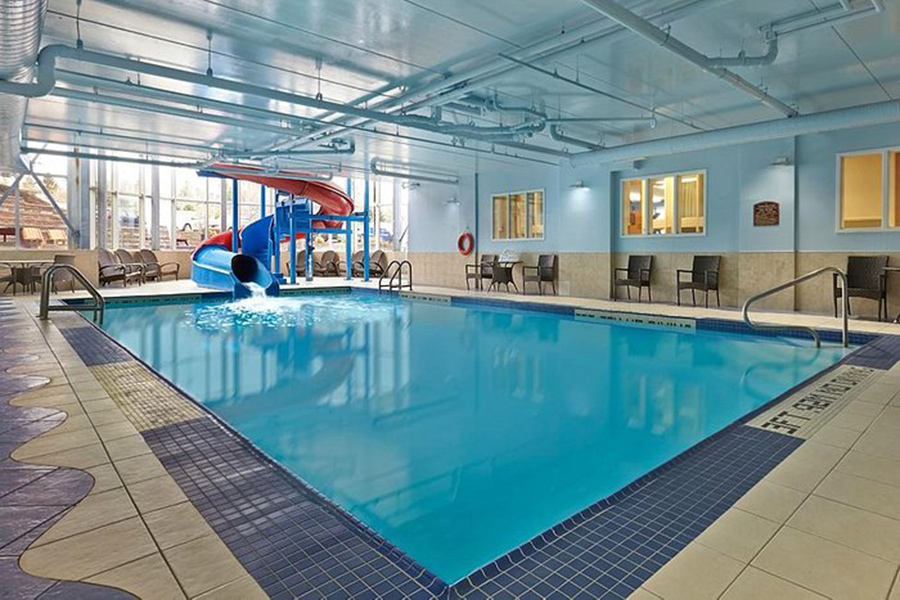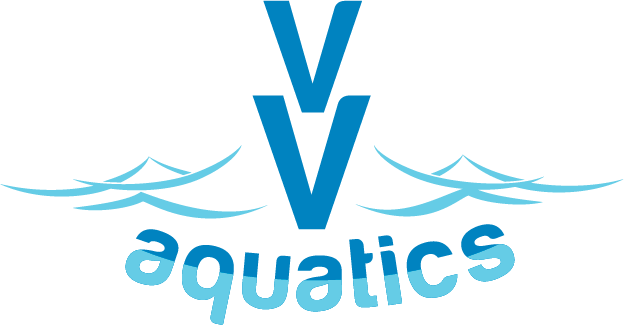
Swim with us!
VV Aquatics (VVA) offers Premium Life Saving Society Certified Private Swimming Lessons in Halifax, Nova Scotia. We offer Summer intensives and evenings throughout the year.
Our VVA programming focuses on development of fundamental swim stroke mechanics and skills customized to each learning type. VVA lessons focus on building a genuine love and respect for the water while overcoming any fears associated.
Customer Reviews
The Best of the Best! VV Aquatics has been absolutely amazing for my son! He was struggling in recreational classes and even developed a fear around water. Within the first 9 minutes of his first session, he was comfortable and loving being in the water. He has since gained confidence and skills it would have taken him years to get on our own!
We have had multiple instructors and each one has been just as fabulous as the last. They are professional, caring, and attentive. I cannot say enough great things about our experience with VV Aquatics.
We will be continuing our lessons for as long as we can! There’s no better place!
Our son began taking lessons from VV Aquatics 2 years ago. His swimming technique has improved exponentially with their one on one style of teaching. The swimming instructors really care about the kids, are fun and engaging, and make the experience enjoyable, even for the parents! I cannot recommend them enough to give your child a very essential life skill such as this.
Since the age of 2.5, I’d been registering my daughter (now 6) in swim lessons for fall and winter sessions with little to no success. She had been very nervous in the water and consistently refused to try new things, resulting in failing levels and frustration from both of us. After completing our first 4 week session with VV Aquatics, I have seen progress like never before, and her prior level of fear of water is almost non-existent. I can’t wait to bring her back for another session and see how she progresses even further as she continues to learn the ever so important skill of swimming. I am so grateful for VV Aquatics, their teachers and their amazing program! Truly life changing.
Total Breakthrough! My five year old began her intensive summer sessions very apprehensive of the water and ended them joyfully submerging, gliding and floating! She can’t wait to come back!
My 8 year old son just completed 2 sessions with VVA. On the first day he was still afraid to put his head under the water and now he is actually swimming independently half the pool length and jumping under water to collecting rings off the pool floor. He progressed so quickly due to the 1-1 nature of lessons AND the focused, individualized support of his coaches. He is well on his way to becoming a strong swimmer. Thank you VV Aquatics!
I was really happy with VV Aquatics! My daughter was initially anxious to attend lessons and put her face in the water, but her instructor was great, and by the end of the session, she felt much more confident and happy to go underwater. The owner of the business, Katie, is very kind and approachable and helpful.
Isaac enjoyed learning swimming with VV Aquatic so so much! Specially want to thank Coach Gavin! Isaac likes his class so much! He never mention to continue lessons with a specific coach until he met Gavin!
Excellent swimming program! My twins were very hesitant to swim before their lessons. They were even nervous to enter the pool. The staff were excellent at making them feel comfortable and moving at their pace. The instruction was differentiated to meet their needs and support their level of comfort. By the end of their lessons, they happily entered the pool and even looked forward to their lessons. They are making great progress and we are very pleased they’re acquiring this important life skill! Thank you very much VV Aquatics!
We are so happy with our daughter’s experience at VV aquatics. Jules was amazing and our daughter looked forward to swimming every day. Thank you for a wonderful learning experience, see you in July!
Done our 3rd round of lessons! Both of our kids just finished their third round of swimming lessons with VV aquatics and each round they make huge improvements. Highly recommend, we will be back!
When my daughter took her first lesson she couldn’t “float” but she could swim a very short distance under water. After 4 weeks she was doing the front crawl unassisted. After 4 months with VV aquatics she is a confident swimmer shallow to deep end, learning so many different strokes, not to mention water safety. The staff is so personable and takes teaching children how to swim very seriously. I cannot recommend VV aquatics enough.
Great Swimming Program: My kids love the VV Aquatics swimming program. Their one-on-one lessons are second to none. Both of my kids have developed strong swimming skills in a very short period of time. Thanks VV Aquatics!
Blown away with my 3 year olds progress. After doing a month of private swimming lessons with VV aquatics, we are blown away at how much and how quickly our son progressed. He went from requiring a life jacket in the pool to swimming independently for a short distance.
He is so confident in the water which gives us so much peace of mind living close to a lake. Thank you to the team at VV aquatics for such an incredible experience!
Our daughters have become so comfortable and confident in the water thanks to the wonderful team at VV aquatics. The improvement and skills they’ve mastered in just 8 lessons is amazing. The girls loved their teachers who keep them engaged and challenged the whole time. We’ll be back for more!
Our son James was unwilling to get in a swimming pool, or even go through the locker room to get to the pool. Immediately, Katie was able to help him overcome his apprehension and get him through the locker room, and Aselin had him in the water almost right away. Over his first set of lessons James came a long way in the water and really enjoyed himself. I can’t wait for him to do more lessons at VV, and our youngest son Robert will be right behind him at VV when he’s old enough.
We had a wonderful experience! The staff are experienced and lovely! The organizer/owner, Katie, is very approachable and sweet! They all try very hard to make the experience a great one!
My daughter absolutely loves VV aquatics.The team is made up of awesome staff that work very well with the kids. They have brought my daughter’s confidence back and have helped enable her to move past her fear of deep water. They have excellent customer service and are prompt to respond to my messages. Will definitely be registering here again!
VV Aquatics’s private swimming lessons were a game-changer for my son. His fear of swimming and the water was a constant struggle, due to a bad experience that happened when he was a young child. However, the lessons with VV worked wonders. The instructor’s (Allie’s) patience and tailored approach helped him overcome his anxiety, and now he’s a confident and happy swimmer. We couldn’t be more grateful for the positive transformation!
This is our second round of swimming lessons. Our kids have looked forward to swimming lessons every time and have both learned so much so quickly! We will be back for another round.
The one-on-one, twice a week format is worth every penny – my daughter’s swimming has progressed immensely. Highly recommend!
When we started the classes this summer my child was afraid of water. I never thought that by now not only she past that fear, she actually enjoys the swimming.
It could not be possible without the help of the amazing team at VV Aquatics. The instructors are amazing and they take their time to know the child and make him/her comfortable.
Great people.
This is our third season for our daughter. Our daughter looks forward to each session and receives great guidance and feedback from her teacher. the results from VV are incredible as usual! I will be putting my toddler into VV lessons as well. We are so happy with Katie and her team of amazing trainers!
My son really enjoyed his swimming lessons with VV Aquatics! I’ve watched him gain so much confidence in the water and the instructors were excellent in their approach. I highly recommend this program!
This was a wonderful experience; with 1:1 attention our son Mason advanced so quickly in the pool. We will definitely send him again next year. His instructor Allie was a highlight – she was so good with pushing him and making it fun in the process. Thank you!
I am so impressed with VVA and all the instructors. We had tried group lessons but they just didn’t seem interested or excited about it. My girls (3 & 5 yo) absolutely loved their sessions and are so excited to keep learning, practicing and best of all— dunking their heads!!! Their confidence in the water has growth so much in the past 2 weeks. We can’t wait to do another session.
My 3 year old daughter felt very confident with the VV Aquatic team since day one. The care and attention they all had with her was something very special. She loved going to the class, she would talk about her teachers and she has definitely improved her skills.
Van enjoys his swimming lessons and he was asking to enrol him to another lesson for him to learn more. It’s near to our place so it’s easy going to the location. Fiona is friendly and accommodating.
Thank you and hope he will get a chance to meet Fiona again.
Good job team VV Aquatics!!!
Eliza was great with Stella – she wasn’t a huge fan of the water but what a difference the 4 weeks made! We look forward to Stella’s next session at VV Aquatics!
Our 5 year old daughter began swimming lessons with VV Aquatics in Spring of 2023, and had zero experience in the water along with a hesitation and fear around swimming. After only one class with her instructor her hesitation was gone, and she was excited to learn to swim! After completing the first series of sessions she was already confidently trying new things in the water, and after completing her second series of sessions she is swimming independently without floaties!! The progress has been incredible, the instructors are reliable and enthusiastic, and we can’t wait to sign up for our next series of sessions!
My kids love the VV Aquatics swim program. The instructors are great with kids, and very skilled swim instructors. My kids have vastly improved their swimming skills in just 4 weeks. I highly recommend this swim program. Thanks VV Aquatics!
We were so happy with what our son was able to learn from the teachers at VV Aquatics. He was scared to even go in the water when he first started, and he made so much progress in just a month. The lessons helped with both his swimming skills and confidence, and they made the lessons a lot of fun for him as well!
We just finished our second year experience with VVaquatics.
We found them an asset to our daughters swim skills and she loved the sessions. We were interested in stroke improvement which they were able to provide with great success.
Easy to work with the admin, the coaching and they were even able to accommodate a last minute schedule change on one day.
Chloe loved every moment of her swimming lessons. She was very sad that they came to an end and she loved her instructor very much. Each lesson we saw Chloe progress further and further. We are very pleased with her progress in swimming’s and look forward to signing her up for another session soon!
Both my kids had a wonderful time learning to swim with Vvaquatics. They looked forward to their lessons and they progressed so well from when they started. We look forward to many other fun filled lessons.
The entire VV aquatics team are phenomenal professionals! The instructors are fun, engaging, and are able to develop immediate rapport with the children.
Our 5 year old developed new skills every class; the progression from a non-swimmer to someone who was going under water to collect rings after 2 lessons was amazing!
Our son LOVES swimming and was very disappointed when his session ended tonight. He can’t wait to join the team for the outdoor session in June!
This is our 3rd session with VV Aquatics. My daughter has gone from not even wanting to get in the water to zipping across the pool! We are so grateful to Katie and her crew of amazing instructors!
Nina was fantastic! Olivia has made so much progress in such a short amount of time. We are so glad we were told about VV – 1×1 is the way to go!
My little one who has had trouble learning to swim is now able to float, do some back swimming dive under the water and swim some strokes all within one month of lessons! Thanks VV aquatics!! What a huge improvement!!
I highly, highly recommend VV Aquatics swim school. Our 6 yo son was terrified to dunk his head & jump in the water. IN JUST 4 30 MIN LESSONS with this school, he was challenging himself as to how long he could hold his breath under water! I couldn’t believe it! The care and 1:1 attention Katie & the instructors provide to each kiddo and their learning needs is truly unique & priceless. They incorporated my son’s love for space in his lessons to keep him engaged and happy. Tailoring the lessons to fit the individual needs and interests of your child is something you won’t get at other swim schools in our community. We can’t thank the VV aquatic team enough for helping our child overcome his fears! We ABSOLUTELY plan to return! Thanks a million times over!!!
Our kids love their swimming lessons with VVA. The one-on-one instruction is amazing, and the teachers are all fabulous. The facilities at both the indoor and outdoor locations are convenient and clean!
Both my children were enrolled and they both loved it. Everyone is so friendly and made the kids so comfortable in the water. All were so knowledgeable and kept the kids engaged!!! Highly recommend them
We signed our (newly) 3 year old up for the indoor lessons – so happy we did!! He did not exactly cooperate with anyone for his first lesson, but the instructor and Katie handled it so well, and made us feel comfortable with it all. He now has no problems going in and has made great progress in the short time he’s been going – and that’s all thanks to Katie and her top notch instructors who go above and beyond. We will be signing up again! 🙂
All the praise for VV Aquatics! We had a very apprehensive child and her confidence grew leaps and bounds during the VV program. Katie runs a very well run program and it is clear she puts a lot of effort into recruiting qualified, kind and next-level instructors. We are so thankful to VV for making swimming a sometimes scary experience into a happy & fun activity!
We had a wonderful experience. Staff was very friendly and professional and my son enjoyed going there every day.
This is our second summer with VV Aquatics, and I can say without a doubt their instructors and programming are top notch! I cannot stop raving about their private backyard swimming to all of our family and friends. We have tried traditional swimming lessons and not sure we will bother wasting our time anymore. At VV aquatics our little one achieves more in one or two lessons than in the entire sessions put on by Halifax REC, it is beyond worth it! We’ll be back summer after summer with all of our kiddos to take advantage of VVs amazing setup!
After seeing in action a friends child swimming like a fish because of VV. We immediately enrolled our child last year. After two weeks with Maggie we were blown away, the leaps and bounds of water confidence we saw. Fast forward to this year and another amazing two weeks completed. Katie and her team are giving kids an important life skill in a fun way! We are beyond happy and satisfied with VV and our teacher Maggie. Will be back next year. We brag about VV to everyone! Thank you!
My two kiddos loved their lessons at VV Aquatics. The pool was nice and warm and the 1:1 instruction was excellent. We will be back next year!
We loved our sessions with Katie! She was so kind and patient with my 4 year old daughter and we can’t wait to sign up again next year for more lessons <3
My five year old was afraid to put her head under the water when she started. Now she is swimming without a life jacket. I’m so pleased with the results of these swimming lessons.
High praise for VV Aquatics offering the best private swim lessons for our children. Very professional, going above and beyond cleaning protocols, and making everyone feel comfortable.
Thank you to both instructors, Langley and Tanzima, who helped my 3 year old to get very comfortable in the water. A safe, clean environment to help your child progress in their swimming journey. 😁
Evening Program

| 2 lessons per week for 1 month (8 lessons) | |
| Private, 1:1 swim lessons | |
| Same coach for the entire session | |
| Skill-based lessons, customized to the swimmer | |
| Cost $350 |
Summer Intensives

| 4 lessons per week for two weeks (Mon-Thurs) | |
| Private, 1:1 swim lessons | |
| Same coach for the entire session | |
| Skill-based lessons, customized to the swimmer | |
| Cost $350 |
Swim Levels
You can register your swimmer(s) for any session you wish, we place them in the suitable level.
Pre-school Swim Levels
Pre-school 1
These preschoolers (aged 3 years 3 months and up) will have fun learning to get in and out of the water. We’ll help them jump into chest deep water. They’ll float and glide on their front and back and learn to get their face wet and blow bubbles underwater.
Pre-school 2
These preschoolers learn to jump into chest deep water by themselves, and get in and get out wearing a lifejacket. They’ll submerge and exhale underwater. While wearing a lifejacket they’ll glide on their front and back.
Pre-school 3
These youngsters will try both jumping and a sideways entry into deep water while wearing a lifejacket. They’ll recover objects from the bottom in waist-deep water. They’ll work on kicking and gliding through the water on their front and back.
Pre-school 4
Advanced preschoolers will learn to do solo jumps into deeper water and get out by themselves. They’ll do sideways entries and open their eyes underwater. They’ll master a short (5 m) swim on their front wearing a lifejacket and gliding and kicking on their side.
Pre-school 5
These youngsters get more adventuresome with a forward roll entry wearing a lifejacket and treading water for 10 sec. They’ll work on front and back crawl swims for 5 m, interval training and get a giggle out of whip kick.
Swimmer Levels
Swimmer 1
These beginners will become comfortable jumping into water with and without a lifejacket. They’ll learn to open their eyes, exhale and hold their breath underwater. They’ll work on floats, glides and kicking through the water on their front and back. underwater.
Swimmer 2
These advanced beginners will jump into deeper water, and learn to be comfortable falling sideways into the water wearing a lifejacket. They’ll be able to support themselves at the surface without an aid, learn whip kick, swim 10 m on their front and back, and be introduced to flutter kick interval training (4 x 5 m.)
Swimmer 3
These junior swimmers will dive, do in-water front somersaults, and handstands. They’ll work on 15 m of front crawl, back crawl and 10 m of whip kick. Flutter kick interval training increases to 4 x 15 m.
Swimmer 4
These intermediate swimmers will swim 5 m underwater and lengths of front, back crawl, whip kick, and breaststroke arms with breathing. Their new bag of tricks includes the completion of the Canadian Swim to Survive® Standard. They’ll cap it all off with front crawl sprints over 25 m and 4 x 25 m front or back crawl interval training.
Swimmer 5
These swimmers will master shallow dives, cannonball entries, eggbeater kicks, and in-water backward somersaults. They’ll refine their front and back crawl over 50 m swims of each, and breaststroke over 25 m. Then they’ll pick up the pace in 25 m sprints and two interval training bouts: 4 x 50 m front or back crawl; and 4 x 15 m breaststroke.
Swimmer 6
These advanced swimmers will rise to the challenge of sophisticated aquatic skills including stride entries, compact jumps and lifesaving kicks like eggbeater and scissor kick. They’ll develop strength and power in head-up breaststroke sprints over 25 m. They’ll easily swim lengths of front crawl, back crawl, and breaststroke, and they’ll complain about the 300m workout.
Swim Patrol
Swimmer 7: Rookie
Description coming soon.
Swimmer 8: Ranger
Description coming soon.
Swimmer 9: Star
Description coming soon.
Take a Tour









